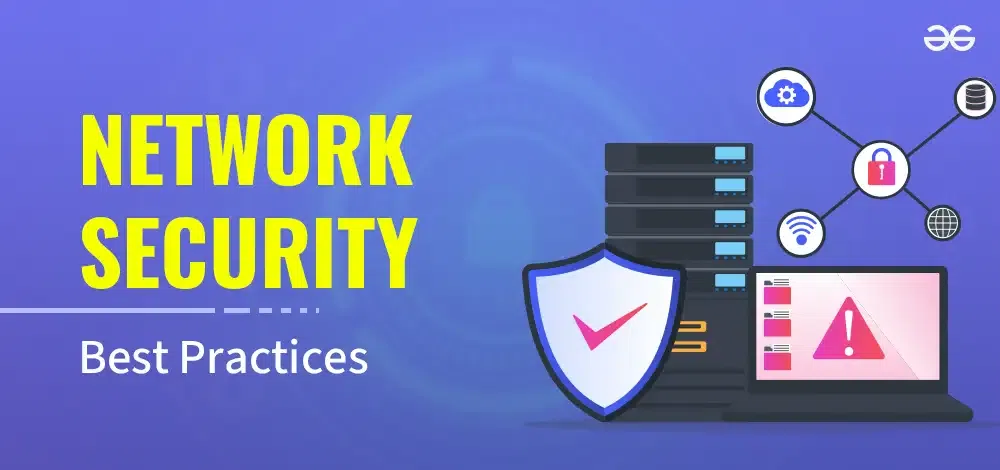The Importance of Network Security in Educational Institutions
In today’s digital age, educational institutions increasingly rely on technology for administrative and educational purposes. This surge in digital adoption underscores the critical importance of maintaining robust network security. Ensuring a secure network is essential to protect sensitive data and foster a safe learning environment. Without adequate security measures, schools and universities could face severe disruptions, loss of data, and even financial losses resulting from cyber-attacks.
Schools and universities must proactively enhance network security to prevent cyber-attacks that could disrupt academic activities or compromise personal information. A well-secured network helps protect personal details like students’ academic records and staff’s data, thus maintaining the institution’s reputation and trustworthiness.
Common Threats to Educational Networks
Understanding common threats to educational networks is crucial in developing an effective cybersecurity strategy. Some of the most prevalent threats include:
- Remote Access Attacks: These attacks exploit vulnerabilities in remote access solutions to gain unauthorized entry into the network. With the increasing trend of remote learning, this form of attack has become more common.
- Malware Injections: Malware can be introduced into the network via phishing emails, infected websites, and even compromised USB drives. Once inside, malware can spread rapidly, causing significant damage.
- Phishing Scams: Phishing emails are a common tool used by cybercriminals to trick people into divulging personal information like login passwords. Data leaks and unauthorized network access are possible outcomes of these frauds.
- Data Breaches: Educational institutions are prime targets for data breaches due to the vast amount of personal information they store. Unauthorized access to this data could result in identity theft and other serious repercussions.
Best Practices for Enhancing Network Security
To reduce these risks, complete best practices must be put into place. Regular software upgrades, endpoint security, and proactive monitoring are important tactics. Frequent updates guarantee that every system is shielded against the most recent vulnerabilities. They can also close security gaps that hackers could use to enter the network without authorization.
Endpoint security is equally crucial as it safeguards individual devices connected to the network. This includes implementing antivirus software, firewalls, and encryption protocols on all student, faculty, and staff devices. Implementing robust security protocols can dramatically reduce the risk of data breaches and ensure the safety of sensitive information.
The Role of Access Control Systems
Systems for controlling access are essential to preserving network security. These systems enforce role-based access control to sensitive data and keep an eye on who enters the network. Students and faculty members, for example, can have various access rights. This reduces the possibility of illegal access by guaranteeing that only individuals with the proper clearance can access sensitive data.
Additionally, to add an extra degree of security, contemporary access control systems can be integrated with multi-factor authentication and biometric security measures. Strong access control measures can secure sensitive data and lower the likelihood of data breaches.
Cybersecurity Awareness and Education
Creating a culture of cybersecurity via training and ongoing awareness campaigns is another essential component of strengthening network security. Teaching staff, instructors, and students about security best practices and possible hazards can significantly reduce cyberattacks. Cyber dangers can also be greatly decreased by following easy steps like avoiding dubious websites and identifying phishing emails.
Other ways to receive this knowledge include online courses, seminars, and workshops. Drills and simulations are another tool that schools can use to improve community preparedness for cyber threats. Educational institutions can enable their members to actively contribute to network security by integrating cybersecurity into the institutional culture.
Future Trends in Network Security
As technology evolves, so do the threats. Future trends in network security aim to integrate AI and machine learning for even more robust protection measures. AI makes it possible to respond to cyber threats more quickly and efficiently by recognizing trends that can point to a threat. Machine learning algorithms can adjust over time, increasing their efficiency in spotting and averting fresh cyberthreats.
By staying up to date on these trends, educational institutions may stay ahead of the cybersecurity curve and ensure they are well-defended against new threats.
Final Thoughts
Educational institutions can guarantee a safe and secure digital environment that supports growth and learning by implementing these best practices and keeping up with new developments. It is impossible to overestimate the importance of having a strong network security policy for the secure and efficient running of educational institutions in the digital age.

